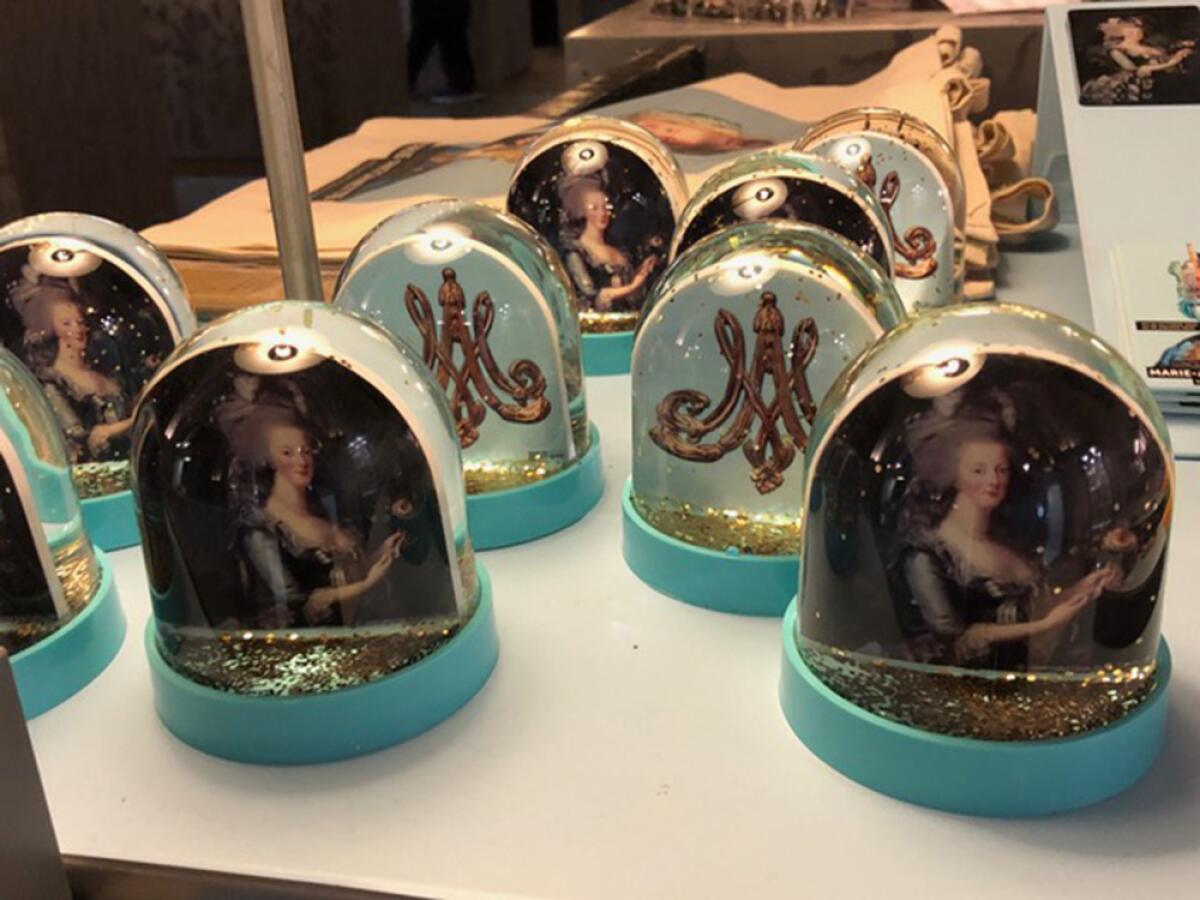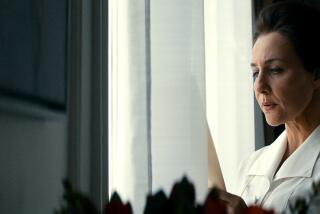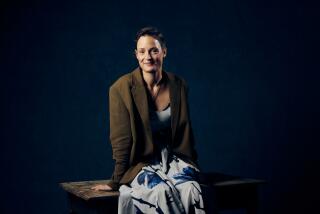The Marie Antoinette you never knew: A ‘modern icon’ and ‘emancipated woman’
PARIS — More than two centuries after her death by guillotine, Marie Antoinette remains one of the most reviled names in history, the epitome of heartless elitism run amok. “Let them eat cake,” the infamous phrase attributed to the French queen, has become shorthand for how the rich and powerful scorn the poor.
Critics have compared President Trump, as well as his wife, Melania, and daughter Ivanka to Marie Antoinette. Louise Linton, the wife of Treasury Secretary Steven T. Mnuchin, was accused of going full Marie Antoinette after she and her husband took a military jet on a day trip to Kentucky, and she responded to the inevitable criticism by boasting of how much tax her family pays.
Now, however, Marie Antoinette is getting a makeover.
This week, 226 years since her execution on Oct. 16, 1793, a new exhibition in Paris aims to show how the queen’s image has been transformed in recent years. From reviled royal to pop icon, her face now appears on gift shop souvenirs at her former home at Versailles, on bars of chocolate, hairbrushes, mugs, shopping bags, fridge magnets and snow globes.
“Marie Antoinette: Metamorphoses of an Image” opens Wednesday at the Conciergerie, the former prison where the queen spent the last few weeks before her execution. It charts how popular perception of the woman the French loved to hate has changed, and aims, the catalog explains, to “shine a light on the worldwide phenomenon of media overkill” that surrounds her.

Marie Antoinette was France’s last queen, the wife of Louis XVI, whose reign came to a violent end in the French Revolution. By the time of her beheading, she had alienated the aristocracy by setting up her own elite “court” within the larger royal court at Versailles, and enraged the middle classes by spending a fortune on clothes and jewels while the French economy tanked — leading to her nickname “Madame Deficit.” Most of all, she was despised by the starving poor for her reported disdain for their suffering. Although there is not a shred of evidence that she actually said, “Let them eat cake,” the words rang true.
Dressed in a simple white dress, her once blond hair gray and shorn, she went to her death with dignity but no public sympathy. As she was pulled through the streets of Paris in a wooden horse-drawn cart, furious crowds spat and screamed abuse. The 37-year-old Austrian-born royal, whose husband had already lost his head, was the most reviled woman in the country.
Historian and exhibition curator Antoine de BaEcque says that the queen is now seen as a tragic heroine a la Diana, Princess of Wales, and that this transformation began after Diana’s death in a car crash in the French capital in August 1997.
When Diana, Princess of Wales, died 20 years ago at the age of 36, she was among the most famous, most photographed women in the world.
“The parallels between Lady Diana and Marie Antoinette were obvious and made people take another look at the queen,” De Baecque says. “Suddenly Marie Antoinette was freed from the royalist versus republican war that raged after she died and began to be seen as this poor-little-rich-girl who represented a type of emancipated woman who had succeeded in freeing herself from the traditional rules imposed on her.”
De Baecque says there is now a “cult of Marie Antoinette.”
“Like Diana she forged a role for herself that was different to what was traditionally expected from the queen. She has become a modern icon; culturally, in fashion, and also in marketing,” he says, pointing to a glass exhibition case. “There is even a Marie Antoinette Barbie doll.”
The 200 exhibits at the Conciergerie include formal portraits, pornographic cartoons and caricatures of the queen as a harpy, a hyena and an amphibious monster, as well as film clips, clothes and magazine covers featuring various celebrity reincarnations of her.
In 2006, the movie “Marie Antoinette” by Sofia Coppola, in which Kirsten Dunst played the queen as a teenage rebel, went some way toward rehabilitating her reputation in the United States, but her name remains a byword for the privileged few’s disdain for the ordinary citizen.
It’s good to be queen.
Not everyone in France is convinced by the Marie Antoinette makeover. Stefania di Pasquale, who studied the French Revolution at university in Paris, is among a handful who penned angry posts on the Conciergerie’s Facebook page, calling the exhibition “royalist propaganda” and perpetuating the “myth of the martyr queen.”
“I can tell you Marie Antoinette was not the martyr some want to portray her. Letters she wrote leave no doubt about her duplicity and hypocrisy,” Di Pasquale says in an interview. “The people were mere beggars to this glamorous royal.”
Philippe Belaval, the president of the French Center for National Monuments, which oversees the Conciergerie, says accepting the “rehabilitation” of Marie Antoinette’s public image should not mean forgetting her political sins.
“There is no doubt she conspired with France’s enemies and it’s no secret she did not approve of the French Revolution so we cannot avert our eyes from her political actions,” Belaval says. “But like the Princess of Wales, Marie Antoinette was a young, beautiful royal who was a little unhappy and who was the victim of political circumstances. She was not prepared for the situations she had to confront; her destiny was tragic.”
“No human being deserved the treatment she endured, but it’s hard to project ourselves back to this time when killing the king and the queen was seen as a political necessity,” he added.
More to Read
Sign up for Essential California
The most important California stories and recommendations in your inbox every morning.
You may occasionally receive promotional content from the Los Angeles Times.











